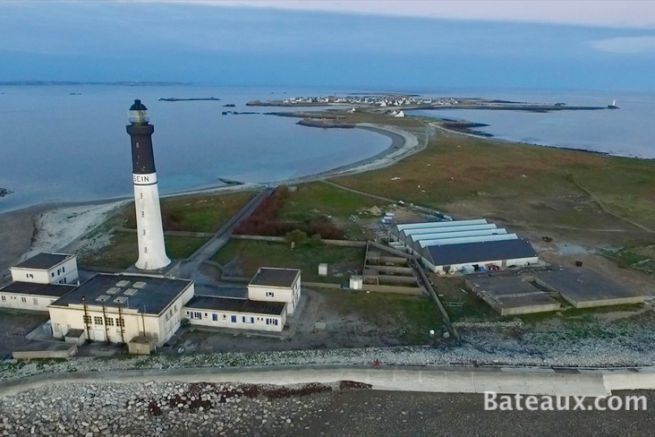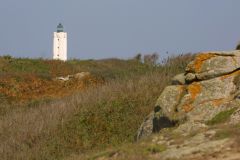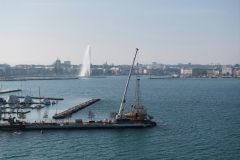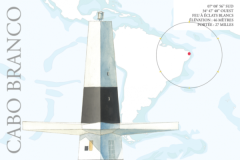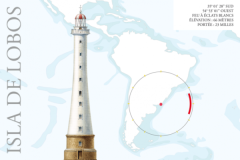A first lighthouse destroyed during the Second World War
The first Grand Phare de l'ile de Sein (Goulenez in Breton) was built in pink granite and lit on May 15, 1839 at the top of a cylindrical tower in masonry on a base of 43 m high.
At the time, it was powered by rapeseed oil. It was built by the Morlaix entrepreneur Michel Piquemard, under the responsibility of the engineer de Kermel. The top of the lighthouse was painted black on a height of 12 m in 1876.
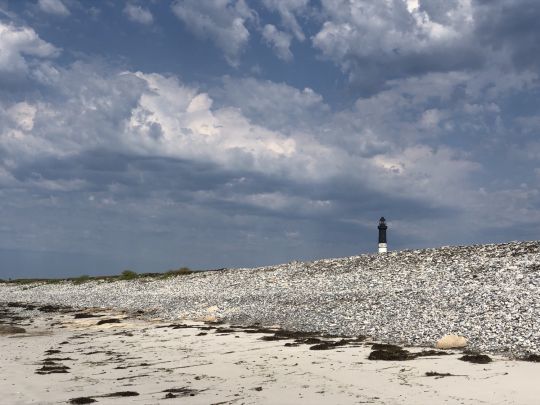
In 1896, a factory was built to manufacture oil gas. From 1911, the Grand Phare de l'ile de Sein received its radio call sign (it was one of the first lighthouses on the French coast to receive it).
These radio lighthouses created by André Blondel marked the entrance to the port of Brest. The lighthouse radio on the island of Sein had the radio call sign S. It worked on the wavelength of 150 m (2MHz) (like the lighthouse of Stiff on the island of Ouessant which had the radio call sign O) by transmitter with damped waves.

In 1932, the power station was built with 3 generators that provided the electricity necessary for the life of the island's residents and for the lantern. In 1935, two 42 m high pylons were erected to support the antennas of the radio lighthouse and the radiotelephone station. They will be dismantled in 2006. At the end of December 1935, on the 15th to be exact, the light was electrified.
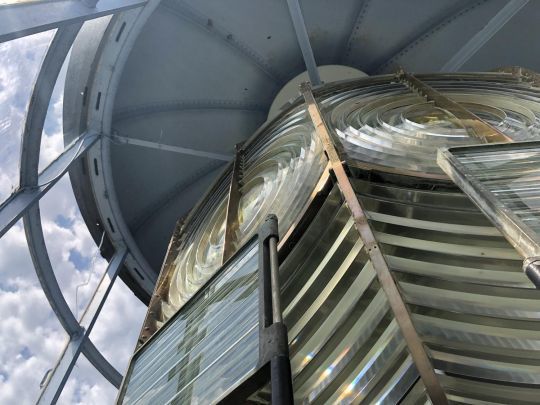
On August 4, 1944, the lighthouse was destroyed with dynamite by the Germans as they left. The optic had already been dismantled during the occupation, the Germans having taken possession of the place in 1940.
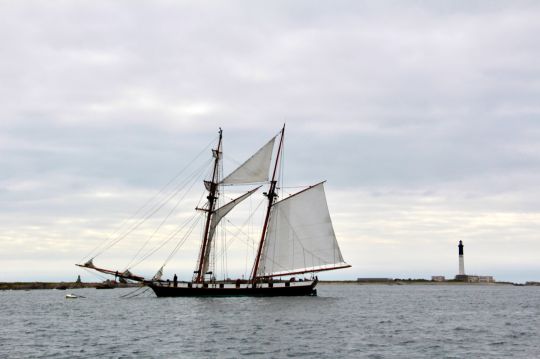
In August 1946, General de Gaulle came to give the Liberation Cross to the commune of Sein and left with a stone from the destroyed lighthouse. This stone will be used as a base for a sculpture of the General, under the windows of his birthplace in Lille.
In June 1945, a temporary gas light was lit at the top of one of the two metal pylons and operated until the commissioning of a permanent light on the new lighthouse, whose construction began in 1949. In 1946, however, it was replaced by an electric light.
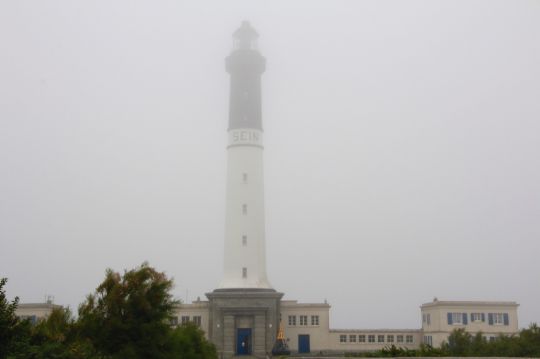
The Grand Phare de l'ile de Sein is reborn from its ashes
The new Grand Phare de l'ile de Sein was rebuilt between 1950 and 1951 on the foundations of the old lighthouse. With a total height of 50.90 m it has a cylindrical interior shape of 3.50 m in diameter, from the base to the top. Outside, its construction is shaped like a cone with a diameter of 6.25 m at the base and 4.50 m at the top. A gap of 8.20 mètres of diameter connects the tower with the base.
The light of 4 white flashes spaced of 25 seconds (Optics turning of 4 panels to the 1/8 of focal length 0, 92 m on mercury tank âeuros 1952) has a range of 27,5 miles (approximately 51 km). The 400 W lamp is changed every two years in September.
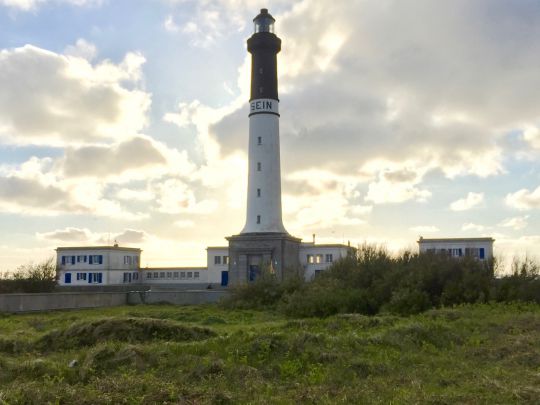
To access the lantern, a reinforced concrete staircase of 249 steps is installed. The private building is enlarged to provide larger living quarters, workshops and technical rooms.
A seawater desalination autoclave, originally installed in the lighthouse enclosure, provides fresh water to the islanders (today it is located in the building of the old lobster hatchery). The power plant that provides the island's electricity is located in the lighthouse.
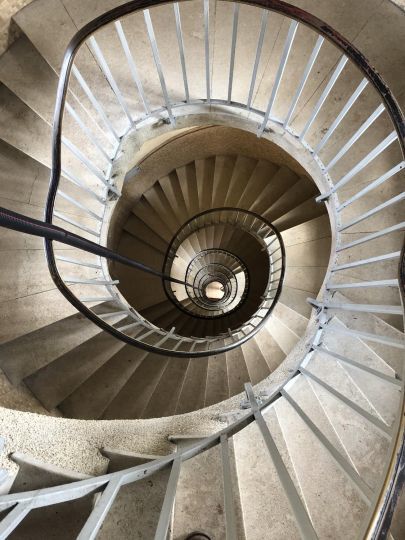
It is thanks to this particularity that there have been lighthouse keepers for so long on the island of Sein since the closest EDF agents are located in Douarnenez.
The last lighthouse keepers, Jacques Crenn and Michel Rozenn left their posts on December 23, 2015, despite the automation of the Grand Phare de l'Ile de Sein 15 years earlier. Modernized in January 2016 and equipped with an emergency light in case of failure, it is remotely controlled from Brest and Ouessant.
